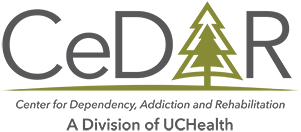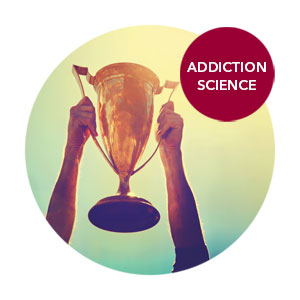ADDICTION SCIENCE
Addiction treatment settings constantly use the word ‘accountability.’ This has been part of historical recovery and Alcoholics Anonymous as well as structured treatment programs including the drug court system. Accountability seems to be one of the most important ingredients for long-term recovery. It helps assist the addicted individual in efforts to stay on course, verify recovery efforts, and avoid the secrecy that happens with addiction. We care a lot about accountability at CeDAR, and this article will discuss some of the clinical data backing up this emphasis.
Internal vs External Accountability
It is important to differentiate these concepts, as they function very differently for the individual. If someone is saying that they need to ‘hold themselves accountable,’ that implies internal accountability. This is a core goal of recovery in that the person is a good steward of their health and fully accepts the limitations of the body and mind. A person with good internal accountability demonstrates a mindful approach to recovery. They use resources at the right time to help support sobriety and have a good degree of self-honesty.
External accountability, while not as ‘desirable’ by the addicted individual, is usually what we need to build in the early stages of recovery. This involves forces outside of the person helping to verify the sobriety. It also encourages behavioral techniques such as rewards or consequences to further promote the desired outcomes. accountability is useful in many cases does not require the consent of the addicted individual. An example of this includes the criminal justice system where participants have a form of mandated sobriety.
The Success of Professional Health Programs
To a lesser degree, accountability is also part of professional monitoring programs such as physician’s health programs or pilot’s program. Those examples involve professional licensure and the requirements for the person to meet in order to renew that license. Of course, the physician could surrender his or her license and not comply with the external accountability. This tends to be the exception rather than the rule (stats show about 15% surrender rather than comply with the mandated sobriety).
The math connected to these programs for long-term recovery is quite strong and actually serves as a template for other forms of treatment. For the physician’s programs, about 78% of participants will maintain sobriety for 5 years. This result is far superior to any other forms of addiction treatment. Because these programs are so successful, it makes sense to take some of these accountability ingredients and apply them to all with addictive disorders.
Drug and Alcohol Testing – Urine
Drug and alcohol screening often referred to as a ‘UA’ for urine screen testing, is the most common method for verifying someone’s sobriety. There are multiple private and public companies that offer urine drug screen options. The urine screens differ in the number of substances tested, cut-off amounts for positive results, and quality control levels.
Standard drug screens, used for new employees for instance, often test for only 5 drugs of abuse – THC, opiates, PCP, cocaine and amphetamine. Interestingly, the testing for PCP is highly questionable, as there are numerous non-abusable medications that can trigger a false-positive for PCP. Not to mention, PCP use seems to be almost extinct and replaced by numerous other designer drugs, ecstasy, or other hallucinogens.
More advanced drug screens will add testing for other substances. These may include:
- THC
- Opiates
- Oxycodone
- Methadone
- Buprenorphine
- Cocaine
- Amphetamine
- Methamphetamine
- PCP
- Benzodiazepines
- Barbiturates
Advanced Alcohol Urine Testing
It is important to note that standard drug screens do not test for alcohol. Because alcohol is one of the most important substances for necessary monitoring, we need to list some alternative testing options. An EtG test added to a urine drug screen is most commonly used. EtG stands for Ethyl Glucuronide and is a metabolite of alcohol. It can stay positive between 80 hours and 5 days from the last drink. It is common that people in the legal system convicted of a DWI will have to submit EtG tests to demonstrate sobriety.
EtS or Ethyl Sulfate is a marker also used in combination with EtG testing. Ethyl sulfate is another metabolite that the body excretes from any alcohol consumption. Individually, Urine EtG has an alcohol sensitivity of 76% and specificity of 93%. Urine EtS carries an alcohol sensitivity of 82% and specificity of 86%. This means that EtG is slightly more accurate (specific) when it turns up positive and EtS will miss fewer instances (sensitive) of alcohol consumption.
Drug and Alcohol Testing – Other Methods
Because they’re often more expensive, other ways to test for substance use are less common. Examples include hair follicle testing or mouth swabs. Hair follicle testing is common to demonstrate the presence or absence of substance use over the past few months. These are typically reserved for ‘high-stakes’ situations in which employment or child custody is on the line.
There also exist advanced confirmatory tests used for urine screens. Mass spectrometry is expensive but able to test for multiple hundreds of compounds in a sample. It’s used for highly disputed testing results in which there also are high stakes. It is common for drug screen testing labs to access mass spectrometry for special circumstances. In our CeDAR residential program, we offer mass spectrometry testing for many people. It increases our knowledge about recent substance use.
Do you or your family member need rehab?
Interlock
An interlock device is a breathalyzer unit attached to an automobile. It functions as a gatekeeper to auto use if the person has been drinking alcohol. Also generated is a monthly report needing download to an interlock central agency. This will chart the number of alcohol breath positives or negatives recorded from the breathalyzer over the month. In a way, Interlock offers two avenues of accountability.
The criminal justice system uses this option most heavily. The goal of many DWI programs is to prevent further drunk-driving over that of full sobriety. This might partially mandate sobriety from alcohol. If desired, they could also surrender driving privileges. It also can be used in voluntary ways, such as with mediated disputes from ex-spouses. An example of this would be a spouse who developed an alcohol problem and the couple agreed to have an interlock device in place to ensure safety when driving the kids around town.
SoberLink Daily Monitoring
SoberLink is one form of daily accountability that has gained greater traction in addiction treatment. This monitoring program functions as a ‘personal interlock device’ asking the participant to submit a breathalyzer multiple times per day through a device on their person. The submission is sent to a central database and a monthly report generated. This report can be submitted to legal agencies, employers, healthcare programs, or significant others interested in the results of the monitoring.
The SoberLink program costs most participants around $200 per month for the use of the personal breathalyzer device as well as the monthly database.
SCRAM bracelet
More recently. the criminal justice system uses the SCRAM bracelet (secure continuous remote alcohol monitor) to verify sobriety from alcohol for DWI offenders. This ankle monitor is an extension of classical monitors that charted one’s location. SCRAM will sense the presence of alcohol through the skin and report that data back to a central monitor in addition to the person’s whereabouts. This program can be used for people mandated to house-arrest while also mandated to alcohol sobriety.
Conclusions
Overall, the use of external accountability can be highly efficacious in promoting sobriety. The ability to verify substance use or abstinence, families, and treatment programs can better tailor treatment and initiatives to help people reach their goals. The most highly effective forms of treatment, such as the physician’s health programs, use long-term regular modes of accountability and achieve stellar recovery results. It can be worthwhile taking some of those measures to use for yourself in your recovery efforts.
Read more CeDAR Education Articles about Addiction Science including Wise Mind




